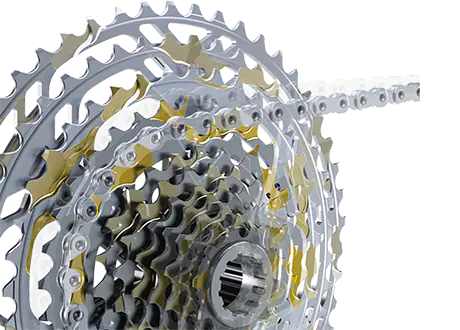
Hello, fellow cycling enthusiasts! Today, we’re diving into the world of mountain bike gears explained. Whether you’re a seasoned pro or just starting, understanding your bike’s gears is key to a smoother, more enjoyable ride. Let’s break it down into four key areas: how they work, adjusting them, shifting gears effectively, and their servicing . So, grab your helmet, and let’s get started!
1. How Mountain Bike Gears Work
Firstly, let’s talk about how these gears actually work. Think of your mountain bike like a finely-tuned orchestra, with each part playing a crucial role in your cycling experience. The heart of the system lies in the gear setup, typically comprising a combination of front chainrings and rear cassettes.
The chainrings are those big circles with teeth, right by your pedals. Bikes can have one, two, or three of these. Then, at the back, you’ve got the cassette, a stack of gears ranging in size. The magic happens when you combine different front and back gears to control how hard or easy it is to pedal. Smaller gears make it easier to pedal uphill, while larger gears are perfect for picking up speed on flat or downhill terrain.
2. How to Adjust Mountain Bike Gears
Now, let’s focus on adjusting those gears. This is crucial for smooth shifting and overall bike performance. The key players here are the derailleurs – those mechanisms that move the chain from one gear to another. The front derailleur handles the chainrings, and the rear derailleur takes care of the cassette.
To adjust, you’ll need a trusty set of tools, including a screwdriver and an Allen key. Start by checking the alignment of your derailleurs. They should be parallel to the chainrings and cassette. Then, tweak the limit screws (usually marked as ‘L’ and ‘H’) to ensure the chain doesn’t jump off the gears. Lastly, adjust the cable tension until it’s as tight as it can be to fine-tune shifting accuracy.
3. How to Shift or Use Mountain Bike Gears
Shifting gears on a mountain bike is all about timing and understanding terrain. Here’s a quick guide:
- Start with Lower Gears: When tackling hills or starting your ride, use lower gears. This makes it easier to pedal.
- Shift Before the Hill: Don’t wait until you’re halfway up a steep incline to shift. Anticipate the terrain and shift gears before you start climbing.
- Avoid Cross-Chaining: This happens when the chain stretches diagonally too much, like being on the largest front chainring and the largest rear cog. It’s inefficient and can wear out your gears.
- Use Your Gears to Manage Fatigue: Alternate between gears to avoid tiring out too quickly. Use higher gears for flat surfaces to build up speed and lower gears for uphill battles.
4. How to Service Mountain Bike Gears
Regular service is key to keeping your gears in top shape. Here’s a basic service checklist:
- Clean Your Gears: After rides, especially muddy ones, clean your chain, chainrings, and cassette. A clean bike is a happy bike!
- Lubricate the Chain: Keep your chain lubricated to ensure smooth shifting. But remember, less is more. You don’t want to attract dirt.
- Regular Check-ups: Every few months, give your bike a thorough check-up. Look for wear and tear on the chain and gears, and make sure the derailleurs are aligned and functioning properly.
- Professional Service: If you’re unsure or encounter complex issues, don’t hesitate to take your bike to a professional. They can spot things you might miss and ensure your bike is in top condition.
And there you have it, mountain bike gears explained! Understanding and maintaining your mountain bike gears isn’t just about a smoother ride; it’s about making the most of your cycling adventures. So, gear up, get out there and enjoy the ride!
You may also like to read our Mountain Bike Tyre Pressure Guide.
